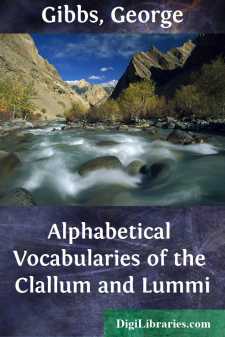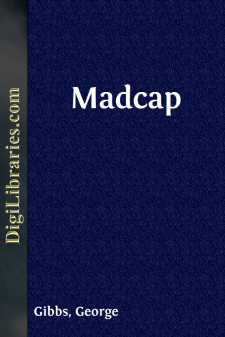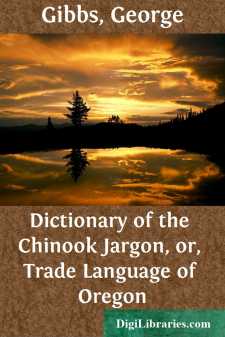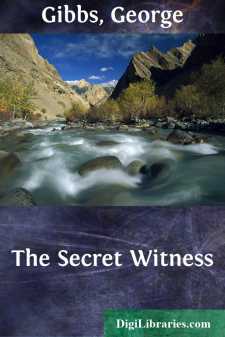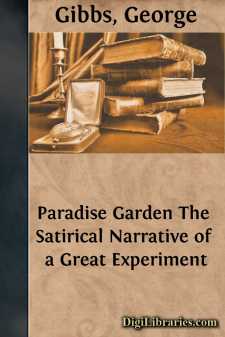Categories
- Antiques & Collectibles 13
- Architecture 36
- Art 48
- Bibles 22
- Biography & Autobiography 813
- Body, Mind & Spirit 142
- Business & Economics 28
- Children's Books 14
- Children's Fiction 11
- Computers 4
- Cooking 94
- Crafts & Hobbies 4
- Drama 346
- Education 46
- Family & Relationships 57
- Fiction 11829
- Games 19
- Gardening 17
- Health & Fitness 34
- History 1377
- House & Home 1
- Humor 147
- Juvenile Fiction 1873
- Juvenile Nonfiction 202
- Language Arts & Disciplines 88
- Law 16
- Literary Collections 686
- Literary Criticism 179
- Mathematics 13
- Medical 41
- Music 40
- Nature 179
- Non-Classifiable 1768
- Performing Arts 7
- Periodicals 1453
- Philosophy 64
- Photography 2
- Poetry 896
- Political Science 203
- Psychology 42
- Reference 154
- Religion 513
- Science 126
- Self-Help 84
- Social Science 81
- Sports & Recreation 34
- Study Aids 3
- Technology & Engineering 59
- Transportation 23
- Travel 463
- True Crime 29
Alphabetical Vocabularies of the Clallum and Lummi
by: George Gibbs
Categories:
Description:
Excerpt
PREFACE.
The tribe of Clallams, as they are usually called by the residents of Washington Territory—by the neighboring Indians named S'klal´am, and denominated by themselves Nà «s-klái yà «m—inhabit the southern shore of Fuca Strait, from about the OkÃâ¢ho River on the west, to Port Townshend on the east, bordering in the first direction on the Makahs, sometimes called Classets (the Klaizzart of Jewitt), a tribe of the Nootka family who inhabit Cape Flattery, and in the other on the Chemakum, like themselves a branch of the Selish, though a yet more remote one. Their language is the same, with some dialectic differences only, as that of the Songhus and Sokes of Vancouver Island opposite. It is this which has been referred to by Drs. Scouler and Latham as the "Nusdalum," undoubtedly, in the first instance, a misprint.
The Clallam differs materially from the other Selish languages of the Puget Sound country, though less from the Lummi than the rest. Its noticeable feature is the frequent occurrence of the nasal ng.
The Lummi tribe live on the lower part of a river heading in the Cascade Range, north-east of Mount Baker, and emptying by two mouths, one into Bellingham Bay, the other into the Gulf of Georgia, the upper waters of which are inhabited by the Nook-sahks (Nà «k-sák). They are, however, intruders here, their former country having been a part of the group of islands between the continent and Vancouver Island, to which they still occasionally resort. Their own name is Nà «kh´lum-mi. The Skagits call them Nà «kh-lésh, and some of the other tribes Há-lum-mi. Their dialectic affinities are rather with the Sannitch of the south-eastern end of Vancouver Island than with any of the Indians of the main land, and the two probably at one period formed a single tribe, which more remotely was connected with the Clallams and Songhus. The Simiahmoo (Si-mi-á-mu), a small remnant, living on the bay of that name, north of them, belong likewise to this group. On the south the Lummi adjoin the Samish and other bands of the Skagits, who in language approach the Nisquallies.
Like the Clallam, their language abounds with the nasal ng, both as a prefix and a termination. It has another peculiarity, in great measure its own, in the broad sound of the letter a, somewhat as in the words mass, pass, but even more prolonged. I have distinguished this in the vocabulary by the italic. The letters f, r, v, z, are wanting in both languages.
The Clallam and Lummi, as will be observed, contain three classes of cardinals, which I have distinguished as simple, personal, and of valuation, although these terms are not strictly accurate; certain objects, besides men, being counted by the second, and others, as well as money, by the third; I have never fully ascertained the distinctions which govern their use. The words animate and inanimate do not apply; those of noble and ignoble, by which the French Missionaries designated the names of objects in the Algonquin languages, probably indicate the idea. Mr. Gallatin, in his "Notes on the Semi-Civilized Nations of Mexico," &c., mentions the same peculiarity as existing in the Mexican and Maya, in the former of which there are three different terminations suffixed to the simple numbers, according to the objects denoted. A similar distinction is found in the Makak language, and traces of it, at least, are observable in the Pima. I imagine that by inquiry the fact would be found to exist in other Indian tongues. Singularly enough, this feature also characterizes some of the languages of Micronesia.
Trans. Am. Eth. Soc., vol, i., p. 54.
The affinities of the Clallam and Lummi with the Selish are too obvious to require demonstration. Indeed Dr. Latham has already classed the former with the Shewhapmukh, or, as he terms it, Atna, of Frazer River, the northernmost of the Selish dialects. The term Atna, it may be mentioned, is improperly applied as a family name to these languages, as it is a Tákulli (Athabascan or Chepewyan) word, signifying, according to Mr. A. C. Anderson, "strangers."
These two vocabularies were collected, the first at Port Townshend, during a residence of a few months, the other at Simiámoo Bay, while I was connected with the N. W. Boundary Commission. Neither of them underwent more than a partial revision, and inaccuracies have therefore doubtless crept in. They are, however, sufficiently reliable to afford the basis of extending comparisons with the other Selish and the more northern coast families.
...

